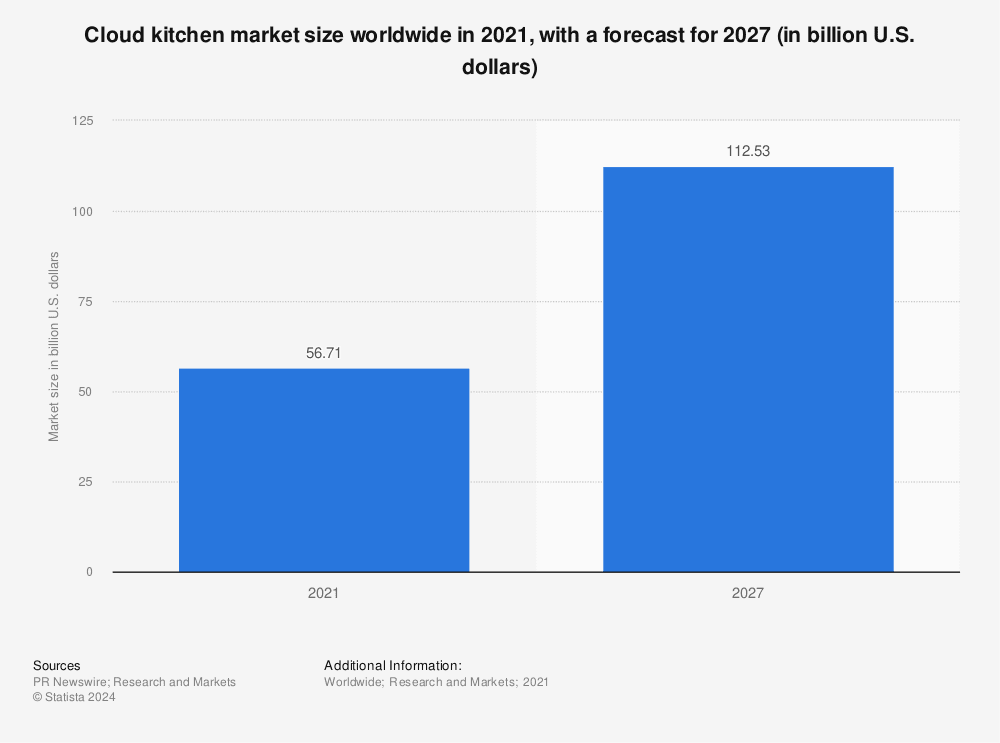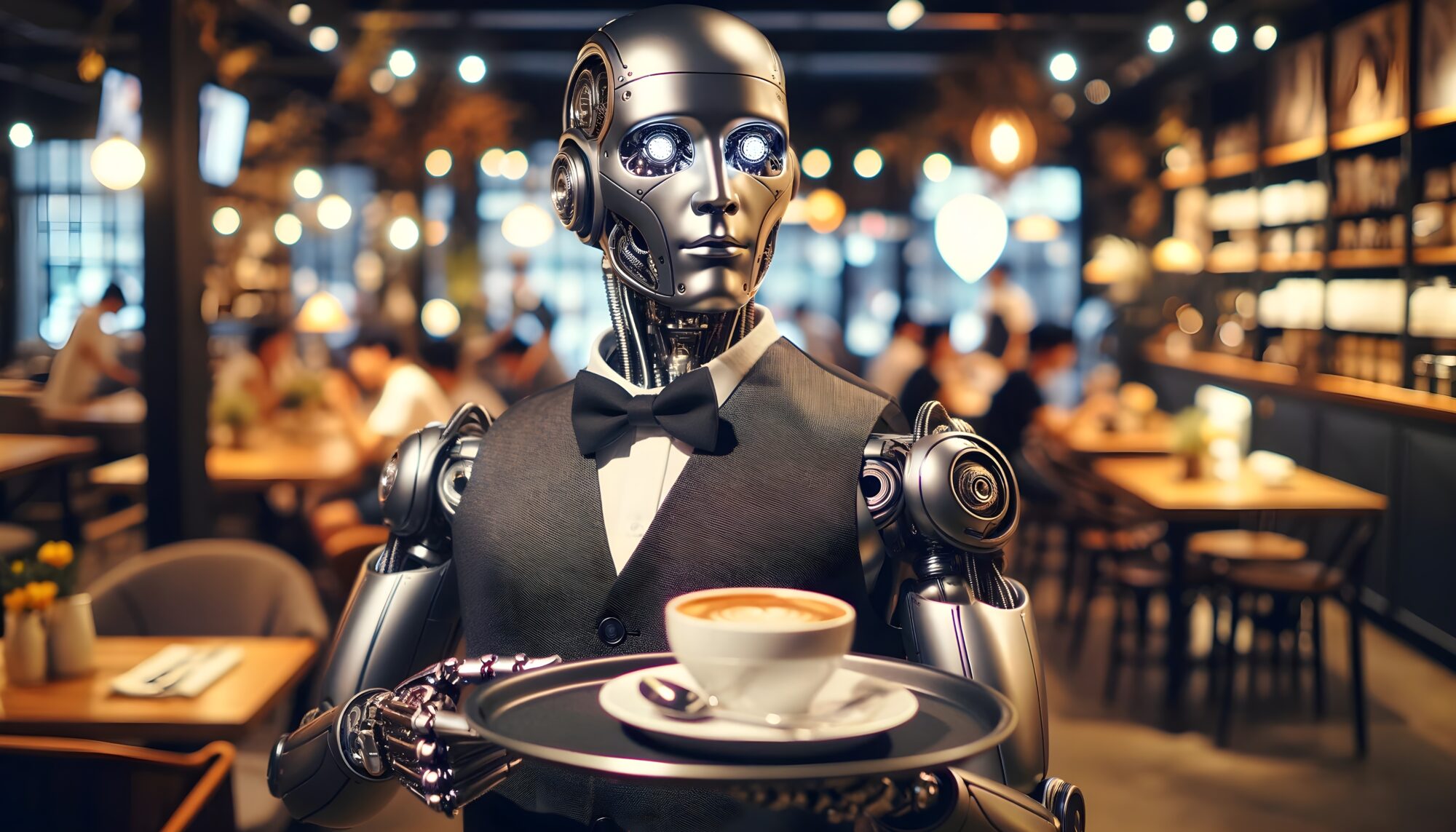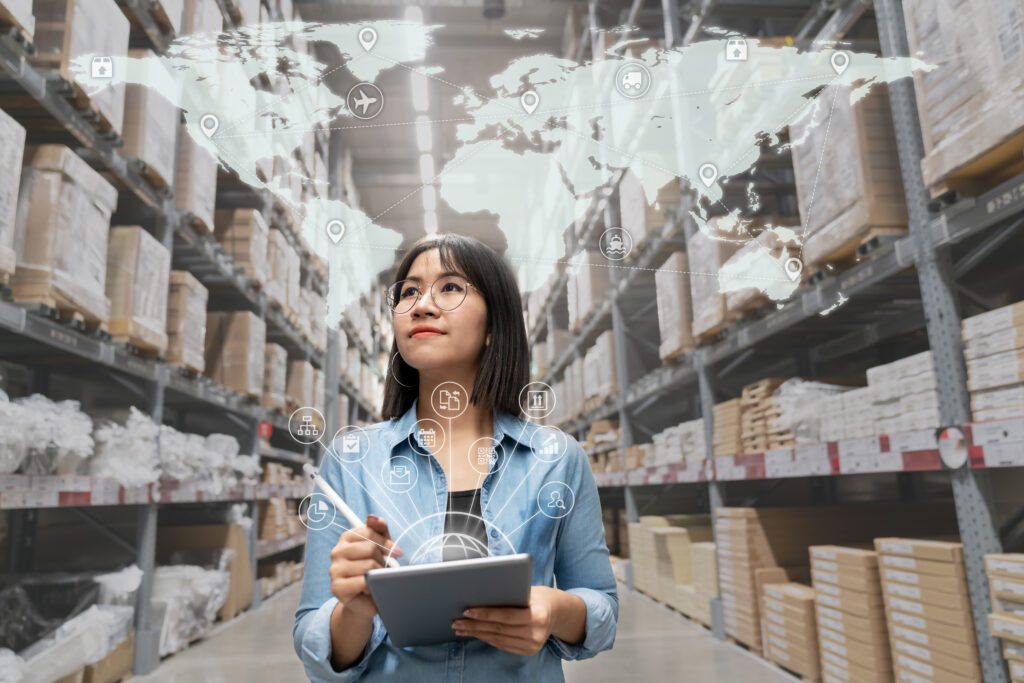Technology Driving Innovation in Restaurant Operations
Setting the Table
The restaurant industry in 2024 is poised to embrace technology more than ever, with a focus on streamlining operations, boosting profitability, and enhancing guest experiences across various locations.
Key trends identified in Crunchtime’s research study include a strong emphasis on growth, cost reduction, efficient employee scheduling, task execution, and skill enhancement. Operators are also keen on investing in training programs and upgrading back-of-house technologies, such as business intelligence, inventory management, and labour scheduling software. We’ve previously looked at how enterprise tech trends like Generative AI, Phygital Convergence and Industry Cloud Platforms are changing all aspects of the business including restaurants.
In the ever-evolving world of dining, where innovation is the key to staying ahead of the competition, 2024 promises to be a year of unprecedented technological advancement in the restaurant industry. As our founders prepare to attend the Multi-Unit Restaurant Technology Conference (MURTEC), where IT leaders converge to explore the latest trends and solutions.
At Olive, we understand the importance of staying ahead of the curve, and why it’s key to survival. We’ve compiled a list of the top restaurant tech trends for 2024, helping you navigate these challenging times while delivering exceptional dining experiences. Let’s dive in!
1. Cloud POS – Revolutionizing Order Management
A cloud POS system is a type of point-of-sale (POS) system that harnesses the power of the cloud to store data. What’s great about these systems is that they give businesses the flexibility to access their data from anywhere, at any time. Plus, they’re often more cost-effective than traditional POS systems since there’s no need to invest in or maintain hardware—though hardware options are available for those who prefer it.
In 2024, we anticipate a continued surge in the adoption of or migration to cloud POS solutions, empowering restaurants to streamline order management, optimize inventory control, and enhance customer experiences.
Considering Industry Cloud Platforms for your POS
Industry Cloud Platforms (ICPs) are tailored IT solutions that integrate software, platform, and infrastructure services seamlessly, catering to specific vertical industries. According to Gartner, ICPs are transforming cloud platforms into customizable business solutions, and their adoption is growing, with nearly 39% of North American and European enterprises already adopting them and an additional 17% considering deployment by 2026.
ICPs use SaaS, PaaS, and IaaS, along with innovative tech, to enable rapid adaptation of processes and applications, facilitating modular approaches and swift innovation transfer between industries. Unlike community clouds, ICPs offer full industry-relevant capabilities, simplifying maintenance and accelerating cloud adoption.
ICPs are playing a significant role in transforming cloud platforms into customizable business solutions, and their adoption is expected to continue growing as they offer industry-specific capabilities and facilitate rapid adaptation and innovation transfer between industries.
Migrating to the Cloud
At Olive, we understand the complexities that multi-unit restaurant IT leaders face when considering migration to a cloud POS system. One significant challenge lies in ensuring seamless integration and consistency across all locations. With restaurants spread across different regions, each with its setup and infrastructure, transitioning to a cloud-based POS system could introduce hurdles in terms of data synchronization, network connectivity, and hardware compatibility.
Moreover, concerns regarding data security and compliance may arise, particularly when handling sensitive customer information and payment processing across multiple locations. IT leaders must select a cloud POS solution that adheres to industry standards for data protection and complies with regulations like PCI DSS.
Additionally, training and adoption present another hurdle. Employees at each restaurant location will need to be proficient in using the new cloud POS system. This calls for investing in comprehensive training programs to ensure a smooth transition and minimal disruption to daily operations.
While the move to a cloud POS system offers benefits such as increased flexibility and accessibility, multi-unit restaurant IT leaders must navigate these challenges diligently to ensure a successful transition for all locations. At Olive, we’re here to provide guidance and support every step of the way, helping restaurants embrace innovation and thrive in an ever-evolving industry landscape.
What to Look at when Migrating to a Cloud POS
Accessibility Ability to access your POS system from anywhere with an internet connection, perfect for businesses with multiple locations or remote needs.
Scalability Easily scale up or down to meet your business’s changing needs, whether you’re growing or facing seasonal fluctuations.
Automatic Updates Forget manual updates—providers handle patches and updates automatically, ensuring your system is always up-to-date.
Data Security Robust security measures keep your customer and financial data safe and sound.
Integration Seamlessly integrate your POS system with other business tools like accounting software or CRM systems for maximum efficiency.
Read the Case Study
2. Online Ordering – Catering to the Digital Consumer
The proliferation of online ordering platforms has reshaped the way consumers interact with restaurants, providing unparalleled convenience and accessibility. As technology evolves, we foresee further innovations in online ordering interfaces, personalized recommendation engines, and seamless integration with other restaurant management systems.
At Olive, we’re keenly aware of the dynamic shifts shaping the restaurant delivery landscape in the United States. Busy schedules, advancing technologies, and cloud or ghost kitchens collectively fueled the growth of the food delivery market.
The Growing Cloud Kitchen Market 2021-2027
A cloud kitchen also referred to as a dark kitchen, ghost kitchen, or virtual restaurant, is an establishment that does not offer dine-in or takeout options to customers. Instead, it operates primarily through food delivery apps, and online orders via websites or portals to drive sales. According to Statista, the global market size for cloud kitchens was approximately $56.71 billion in 2021 and is projected to grow to $112.53 billion by 2027.

Ghost kitchens provide restaurants with an opportunity to broaden their online ordering footprint, enhancing their visibility on third-party platforms. Particularly in the post-pandemic era, this strategy enables restaurants to effectively respond to the growing consumer preference for delivery services.
The pandemic, in particular, served as a catalyst, propelling online delivery services to new heights as consumers sought convenience and safety. Fortunately, the industry was already embracing online platforms, with revenue from online food delivery reaching an estimated $185 billion in 2022.
Today, more than ever, consumers are turning to restaurant websites, food ordering platforms, and delivery apps to enjoy their favourite meals from the comfort of their homes.

3. Digital Menus – Enhancing Customer Engagement
Digital menus have become a ubiquitous feature in restaurants, captivating diners with immersive visuals, interactive content, and real-time updates. With the ability to showcase menu items in a visually appealing manner and adjust pricing or promotions on the fly, digital menus empower restaurants to create dynamic dining experiences that resonate with modern consumers.
ROI on Digital Menu Boards
Digital menu boards promise not only to enhance the customer experience but also to drive revenue and streamline operations:
Enhancing Customer Experience and Driving Sales
At the heart of the digital menu board revolution lies its ability to influence purchasing behaviour and increase sales margins. These dynamic displays engage customers in innovative ways, capturing their attention and driving impulsive purchases. Studies suggest a significant uplift in sales, with a 3-5% increase reported across various restaurant segments. By showcasing menu items in a visually appealing and interactive manner, digital menu boards create a unique opportunity to differentiate restaurants from competitors and strengthen brand loyalty.
Streamlining Operations and Maximizing Efficiency
Beyond their impact on sales, digital menu boards offer practical benefits for restaurant operations. Scalable and cost-effective, these systems enable centralized management and real-time updates across multiple locations. By eliminating the need for manual updates and minimizing downtime, digital menus enhance operational efficiency and reduce overhead costs. This efficiency in scale translates to significant cost savings, making digital menu boards a practical and scalable solution for restaurant chains of all sizes.
Digital menu boards not only provide a platform for showcasing menu items but also catalyze innovation and growth. By leveraging the power of digital technology, restaurants can create immersive dining experiences, build brand equity, and drive sustainable business growth.
Choosing the Right Partner – Evaluating Digital Menu Board Vendors
When sourcing vendors, it’s vital for restaurants to carefully evaluate vendors against their unique business needs. From customization capabilities to reliability and ongoing support, selecting the right partner can make all the difference in maximizing the ROI of digital menu board investments.
What to Look at When Choosing Digital Menu Board Vendors
Customization Capabilities
Assess the vendor’s ability to customize digital menu boards to match the restaurant’s branding and functional requirements.
Reliability
Evaluate the vendor’s track record for delivering reliable solutions that minimize downtime and ensure smooth operations.
Ongoing Support
Determine the level of ongoing support and maintenance provided by the vendor, including troubleshooting and software updates.
Scalability
Ensure that the vendor’s digital menu board solutions can scale to accommodate the restaurant’s growth and evolving needs.
Integration
Verify compatibility with existing systems and software used by the restaurant, such as point-of-sale (POS) systems and inventory management software.
Cost-effectiveness
Consider the total cost of ownership, including upfront costs, licensing fees, and maintenance expenses.
User Experience
Evaluate the usability and intuitiveness of the vendor’s digital menu board interface for both staff and customers.
Innovation
Consider vendors that offer innovative features and technologies to enhance the dining experience and differentiate the restaurant.
4. Phygital Convergence in Restaurant Tech
In the restaurant tech realm, Phygital Convergence merges physical and digital realms for enhanced customer experiences. It’s about integrating online and offline channels to create immersive dining interactions.
Accenture’s 2023 Tech Vision urges organizations to embrace Phygital Convergence. It emphasizes the need to digitalize physical spaces for competitiveness and better customer engagement.
Examples
Restaurants like Starbucks, have adopted Phygital Convergence, teaming up with Amazon to test out a fresh store concept where customers can snag drinks, snacks, and other goodies without the hassle of waiting in line. This collaboration features Amazon’s cutting-edge automated checkout tech, promising a smoother shopping experience. We can’t wait to see that at the airport!
Phygital Implications for Restaurants
Phygital convergence allows restaurants to redefine customer experiences by seamlessly blending physical and digital elements. Restaurants must invest in tech that bridges their physical spaces with digital platforms.
5. AI – Transforming Operations
Artificial Intelligence (AI) is revolutionizing operations, enabling restaurants to optimize efficiency, reduce waste, and deliver consistent culinary experiences. From AI-powered inventory management systems to predictive analytics for menu planning, AI-driven solutions empower restaurants to operate more efficiently and adapt to changing consumer preferences with agility. AI is transforming restaurant kitchens, driving efficiency and ensuring consistent culinary experiences. Here’s how
Inventory Management
AI optimizes ordering and reduces waste by analyzing usage patterns and predicting ingredient shortages.
Menu Planning
Predictive analytics suggest profitable menu items based on customer preferences and seasonal trends.
Food Quality Control
AI technologies monitor food quality during cooking, detecting inconsistencies and spoilage.
Personalized Recommendations
AI analyzes customer data to suggest menu items or promotions, enhancing satisfaction.
Predictive Maintenance
AI predicts equipment maintenance needs, preventing breakdowns and ensuring functionality.
In essence, AI empowers restaurants to operate efficiently and deliver superior experiences. The integration of AI in restaurant operations can be found in various solutions offered by technology companies specializing in hospitality and food service.
Where to find these AI Capabilities
You will find them in the processes they transform. Some specific examples of AI-powered solutions in the restaurant industry include
Inventory Management Systems
AI-driven inventory management systems that analyze usage patterns, predict ingredient shortages and optimize ordering to reduce waste.
Menu Planning Tools
These solutions use predictive analytics to suggest profitable menu items based on customer preferences, seasonal trends, and ingredient availability.
Food Quality Control Technologies
AI-powered systems monitor food quality during cooking and storage, detecting inconsistencies, and potential spoilage to ensure high-quality dishes.
Personalized Recommendations Platforms
These platforms use AI to analyze customer data, including past orders and feedback, to suggest personalized menu items or promotions, enhancing customer satisfaction and driving sales.
Predictive Maintenance Solutions
Maintenance management systems leverage AI algorithms to predict equipment maintenance needs, preventing breakdowns, and ensuring the smooth functioning of kitchen equipment.
These solutions are typically offered as software platforms or services that integrate with existing restaurant management systems, providing operators with valuable insights and tools to streamline operations, reduce costs, and enhance the overall dining experience for customers.
6. Self-Order Kiosks – Streamlining Ordering Processes
Self-order kiosks are transforming the customer service landscape in the food industry by offering a more efficient, personalized, and satisfying dining experience. These kiosks allow customers to browse menus, customize their orders, and make payments at their own pace, which not only enhances the customer experience but also brings several operational benefits to the establishments that deploy them.
Key Benefits of Self-Order Kiosks
Improved Customer Experience
Self-order kiosks cater to the modern consumer’s desire for autonomy by allowing them to control their buying experience. This autonomy leads to reduced wait times and a streamlined ordering process, which in turn results in faster service and increased customer satisfaction.
Increased Order Accuracy
By enabling customers to directly input their orders, self-service kiosks significantly reduce the chances of human error, ensuring that orders are accurately relayed to the kitchen.
Enhanced Operational Efficiency
Kiosks free up staff from taking orders, allowing them to focus on preparing food and attending to other customer needs. This not only optimizes staff productivity but also saves resources.
Higher Revenue and Upselling
Kiosks have been shown to encourage customers to spend more, with orders placed via kiosks being up to 30% higher in value compared to those taken by the staff. This is partly due to the kiosks’ ability to effectively upsell and promote add-ons and specials.
Data Collection and Insights
Self-order kiosks can collect valuable data on customer preferences and ordering patterns, providing businesses with insights that can inform menu adjustments, marketing strategies, and overall operational improvements.
Reduced Labour Costs
By automating the ordering process, kiosks can help mitigate the impact of labour shortages and reduce the overall labour costs associated with taking orders.
Considerations When Evaluating Self-Order Kiosk Vendors
To successfully implement self-order kiosks, businesses should
- Clearly define their objectives and requirements for the kiosks, including desired features and functionalities.
- Conduct thorough research to select the right vendor that can meet their specific needs.
- Engage and train staff on how to assist customers with the kiosks and address any issues that may arise.
- Continuously monitor the performance of the kiosks and collect feedback from both customers and staff to make necessary adjustments and improvements.
Self-order kiosks represent a significant advancement in customer service technology within the food industry. They not only improve the customer experience by reducing wait times and increasing order accuracy but also offer numerous operational benefits, including increased revenue, enhanced efficiency, and valuable data insights. With careful planning, evaluation and implementation, self-order kiosks can become a key component of a successful restaurant’s strategy to meet the evolving needs of its customers.
7. Kitchen Display Systems – Enhancing Workflow Efficiency
Kitchen Display Systems (KDS) optimize kitchen workflows by providing chefs with real-time order information, prioritizing tasks, and minimizing errors. By replacing traditional paper tickets with digital displays, KDS streamlined communication between front-of-house and back-of-house staff, resulting in faster ticket times, improved order accuracy, and enhanced kitchen efficiency.
Kitchen Display Systems (KDS) are like the maestros of a restaurant kitchen, orchestrating a seamless flow of orders and tasks. Here’s how they make the kitchen sing!
Instant Updates
KDS keeps everyone in sync with real-time order updates, waving goodbye to paper tickets and hello to clarity and accuracy.
Priority Management
They’re like traffic controllers, sorting orders by urgency so chefs know exactly where to focus their culinary magic first.
Error Reduction
With digital displays, there’s less room for mix-ups, ensuring dishes are prepared just as they’re ordered, without a hitch.
Smooth Communication
KDS serves as the kitchen’s megaphone, ensuring front-of-house and back-of-house teams are on the same page, and no misunderstandings are allowed.
Speedy Service
By keeping chefs in rhythm, KDS helps dishes hit tables faster, perfect for those busy rushes.
Efficiency Boost
Overall, KDS keeps the kitchen humming along, cutting down on bottlenecks and helping chefs handle whatever the rush hour brings.
In a nutshell, Kitchen Display Systems are the unsung heroes behind a restaurant’s smooth operation, making sure every dish is served with precision and speed.
What to look for when sourcing KDS Systems
For a multi-unit restaurant IT leader, selecting the right Kitchen Display System (KDS) is critical for ensuring smooth operations across all locations. Here’s what to look for.
Scalability
The KDS should be able to scale seamlessly to accommodate the needs of multiple restaurant locations without sacrificing performance or reliability.
Centralized Management
The IT leader would prioritize a KDS that offers centralized management capabilities, allowing them to monitor and configure KDS settings, menus, and updates across all units from a single interface.
Customization Options
Each restaurant location may have unique requirements or workflows. Therefore, the IT leader would seek a KDS that offers flexibility and customization options to adapt to different kitchen layouts and operational preferences.
Integration Capabilities
The chosen KDS must integrate smoothly with other existing systems in the restaurant’s tech stack, such as point-of-sale (POS) systems, inventory management software, and back-office solutions.
Reliability and Support
Reliability is paramount in a fast-paced restaurant environment. The IT leader would prioritize a KDS provider known for reliable hardware and software, backed by responsive customer support to address any issues promptly.
Reporting and Analytics
The ability to generate insights and reports on kitchen performance, order trends, and efficiency metrics can help the IT leader make data-driven decisions and identify areas for improvement across all restaurant locations.
Training and Onboarding
The KDS vendor should offer comprehensive training and onboarding resources to ensure that kitchen staff at all locations can effectively use the system and maximize its benefits.
Cost-effectiveness
While quality is important, the IT leader would also consider the cost-effectiveness of the KDS solution, including upfront costs, ongoing maintenance fees, and potential return on investment (ROI) in terms of increased efficiency and productivity.
By prioritizing these factors, a multi-unit restaurant IT leader can select a KDS that not only meets the immediate needs of their organization but also supports long-term growth and success across all locations.
8. Robots – The Future of Culinary Innovation?
In the kitchen of the future, robots are not just science fiction—they’re a reality. From automated food preparation to robotic delivery systems, restaurants are harnessing the power of robotics to revolutionize the culinary landscape. With their precision, consistency, and efficiency, robots are poised to become indispensable members of the culinary team, freeing up human chefs to focus on creativity and innovation. Check out this video from Foodverge to see them in action.
Innovate Wisely – Olive Helps You Source Solutions Beyond the Trends
While diving into the realm of restaurant tech trends, like cloud POS systems, online ordering, and AI-driven solutions, it’s crucial to recognize the hurdles that may arise. Transitioning to a cloud POS system, for instance, might bring about challenges in syncing data and ensuring hardware compatibility, especially for multi-location chains. We understand the importance of data security and compliance, urging careful consideration and robust investment in protective measures.
Despite the promises of AI and Robots streamlining operations, concerns about potential job displacement and the human touch may emerge. Moreover, the initial costs and ongoing maintenance expenses can pose financial strains, particularly for smaller ventures.
Embracing these technological advancements indeed holds immense potential for enhancing restaurant operations and customer experiences. However, businesses must navigate the delicate balance between risks and rewards diligently. Just like crafting a Michelin-star-worthy dish requires precision and artistry, strategically composing a top-tier tech stack demands careful consideration and planning. By thoughtfully selecting and integrating the right mix of technologies, businesses can create a seamless and innovative dining experience that delights customers while optimizing efficiency and profitability.
At Olive, we understand that navigating the vast landscape of restaurant technology can be daunting. That’s why we’re committed to helping restaurants source and find the best-fit solutions for their unique needs. Through our comprehensive platform, we provide valuable insights, expert recommendations, and personalized support to guide restaurants every step of the way in their technology-sourcing journey. Whether it’s selecting the right POS system, implementing AI-driven solutions, or integrating digital menu boards, Olive is here to empower restaurants to thrive in an increasingly digital world.
Embracing the Future of Multi-Unit Restaurants
As we journey into 2024, the restaurant industry stands at the forefront of technological innovation, poised to redefine the dining experience for generations to come. By embracing the latest advancements in cloud POS, online ordering, AI, and robotics, restaurants can unlock new opportunities for growth, efficiency, and customer satisfaction. At Olive, we’re committed to helping restaurants navigate this transformative landscape, harnessing the power of technology to shape the future of dining experiences.






